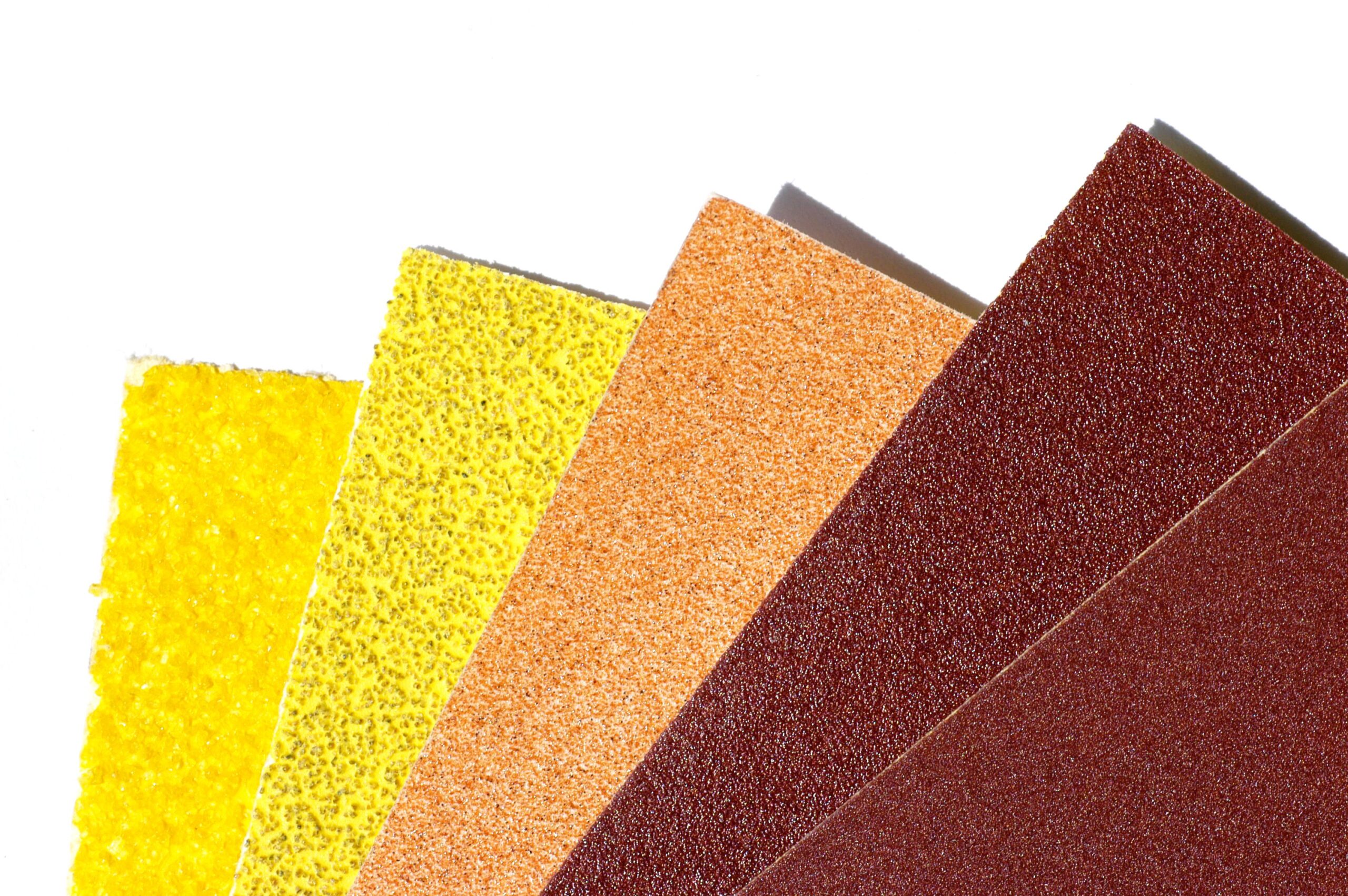Sanding is the first step in every woodworking project. You must pick the appropriate type and grit of sandpaper for any kind of power sander or hand sanding. Using the wrong sandpaper can result in permanent damage to your work.

Choose the Right Grit
The amount of abrasive particles per square inch in the sandpaper is graded, with lower numbers meaning coarser grits. Sandpaper grades range from coarse (40 to 60 grit), medium (80 to 120), fine (150 to 180), very fine (220 to 240), extra fine (280 to 320) and superfine. Sanding pads and paper with progressively finer grits removes the scratches produced by the prior paper, leaving a smooth surface.
Grading Sandpaper
Commercial and industrial sandpaper are the two primary kinds. The material used as the grit, the backing material (paper), and the glue used to keep it in place all differ. All three components of industrial grades are of higher quality.
You may also come across sandpapers labelled as “open-coat” or “closed-coat.” The difference is that closed-coated sandpaper has bigger gaps between the particles, whereas open-coated sandpaper has the grit particles grouped more closely together. As a rule, an open coat is usually superior for woodworking since it clogs less frequently and especially when working with softwoods that have more resin.
Types of Abrasives
There are five basic sorts of sandpaper, yet not all are suitable for woodworking. Glasspaper, commonly known as flint paper, is light and pale yellow in colour. Although glasspaper dissolves easily and is rarely used for woodworking, it is not recommended since it is quite fragile.
A garnet paper sanding block is a smooth, hard piece of wood that’s used for removing dust from your workpiece before it enters the sander. It leaves a superior finish and does not sand the wood as rapidly as other sandpapers. Garnets are perfect for final sanding because they leave an excellent finish.
Another popular sandpaper for woodworking tasks is aluminium oxide. It’s the most frequent type of paper used in power sanders. Aluminium oxide is more durable than garnet paper but provides a less attractive finish.
Silicon Carbide papers are often dark grey or black. This paper is used for finalizing metals and “wet-sanding” using water as a lubricant, particularly in the steel industry. While Silicon Carbide paper is utilized in some high-end finishes, it isn’t commonly used in woodworking.
Finally, ceramic sandpaper is made of some of the most permanent abrasives available and can remove a substantial amount of material in an instant. Ceramic paper is frequently used for belt sander belts, but it may also be used to hand-shaper wood. Ceramic sandpaper is very abrasive, and when combined with a rough or textured surface, it can easily sand through the finish layer and ruin a piece.
Getting a Great Finish
In most woodworking applications, starting with varying coarse-grit aluminium oxide papers for the first sanding stages followed by finer-grit garnet papers for the final sanding will provide a very smooth finish that shows off your woodworking abilities while also providing a great basis for staining or painting your project.
Leave a Reply